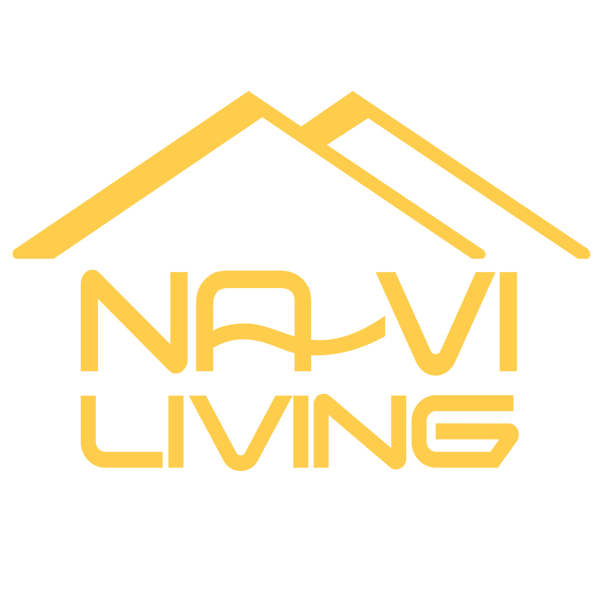Canada is one of the top destinations for immigrants thanks to its strong economy, high quality of life, and welcoming immigration policies. Every year, thousands choose to make Canada their new home through various immigration programs.
This guide will explain how to immigrate to Canada, covering key pathways, eligibility requirements, costs, age limits, and the citizenship process to help you start your journey with confidence.
- How to Obtain Permanent Residency in Canada: A Comprehensive Guide
- Life in Canada as an Immigrant: A Comprehensive Guide to Thriving in the Great White North
- What is the Fastest PR in Canada? Top Immigration Pathways in 2024
Immigration to Canada: Overview

Immigration to Canada refers to the legal process by which foreign nationals are granted permission to live permanently or temporarily in Canada. This process is governed by Immigration, Refugees and Citizenship Canada (IRCC), the federal department responsible for managing immigration and citizenship.
There are several types of immigration to Canada, each designed to address different needs and circumstances:
- Permanent Residence: This is the most common pathway for those who want to settle in Canada indefinitely. Permanent residents have the right to live, work, and study anywhere in Canada and can eventually apply for citizenship. Popular permanent residence programs include Express Entry for skilled workers, Provincial Nominee Programs (PNPs), family sponsorship, and business immigration programs such as the Start-up Visa.
- Temporary Residence: Temporary visas allow individuals to stay in Canada for specific purposes and durations, such as study permits, work permits under the Temporary Foreign Worker Program, or visitor visas. These do not grant permanent status but can sometimes lead to permanent residence through various transition pathways.
- Refugee Immigration: Canada has a well-established refugee resettlement system that admits individuals fleeing persecution or danger in their home countries. Refugees may be admitted through government-assisted programs, private sponsorships, or blended programs that combine both. These programs include rigorous security and background checks and provide financial and social support upon arrival.
- Humanitarian and Compassionate Immigration: This special category allows individuals who do not meet the criteria of other immigration programs but face exceptional hardship or have strong ties to Canada to apply for permanent residence on humanitarian and compassionate grounds. This pathway is discretionary and considers individual circumstances such as medical issues, family relationships, or risks if returned to their home country.
For authoritative and up-to-date information, prospective immigrants should consult the official Government of Canada immigration website, which details all programs, eligibility criteria, application procedures, and processing times.
Government of Canada immigration website: https://www.canada.ca/en.html
Canadian Immigration Programs

Canada offers a variety of immigration programs designed to meet different needs and qualifications. Here is an overview of the major programs and their eligibility criteria:
Express Entry (Skilled Workers)
Express Entry is the primary pathway for skilled workers seeking permanent residence. It manages applications through three federal economic immigration programs: Federal Skilled Worker, Federal Skilled Trades, and Canadian Experience Class. Candidates are ranked based on a points system considering factors like age, education, work experience, and language ability. Invitations to apply are issued to the highest-ranking candidates in regular draws, with recent focus on in-Canada experience and priority sectors such as healthcare and skilled trades.
Provincial Nominee Programs (PNPs)
PNPs allow provinces and territories to nominate immigrants who meet their specific labor market needs. Each province has its own streams targeting skilled workers, entrepreneurs, and graduates. Applicants typically need a job offer or relevant work experience in the province. PNPs are a popular route for those who may not qualify under Express Entry but have skills in demand regionally.
Family Sponsorship
Canadian citizens and permanent residents can sponsor certain family members, including spouses, partners, dependent children, parents, and grandparents, to immigrate to Canada. Sponsors must meet income requirements and agree to support the sponsored relatives financially.
Caregiver Program
Enhanced caregiver pilot programs launched recently provide a direct pathway to permanent residence for caregivers who have a job offer in home child care or home support work. Applicants must meet language, education, and work experience criteria and will obtain permanent residency upon arrival.
Atlantic Immigration Program
This program targets skilled workers and international graduates who want to live in one of Canada’s four Atlantic provinces (Nova Scotia, New Brunswick, Newfoundland and Labrador, and Prince Edward Island). It requires a job offer from a designated employer and aims to address regional labor shortages.
Quebec-Selected Skilled Workers
Quebec operates its own immigration system with criteria distinct from the federal programs. Skilled workers must apply to the Quebec government for a Certificat de sélection du Québec (CSQ) before applying for permanent residence with the federal government.
Start-up Visa Program (Business Immigration)
This program targets immigrant entrepreneurs who can establish innovative businesses in Canada that create jobs and compete globally. Applicants must secure support from a designated Canadian venture capital fund, angel investor group, or business incubator and meet language and settlement funds requirements.
Economic and Business Immigration

Canada offers several economic and business immigration pathways designed to attract skilled workers, entrepreneurs, and investors who can contribute to the country’s economy. These programs provide routes to permanent residency and eventual citizenship for qualified applicants.
Start-up Visa Program
The Start-up Visa Program targets immigrant entrepreneurs who have innovative business ideas and the potential to create jobs in Canada. To qualify, applicants must:
- Secure a commitment from a designated Canadian venture capital fund, angel investor group, or business incubator.
- Meet language proficiency requirements in English or French.
- Have sufficient settlement funds.
This program offers a direct path to permanent residence, encouraging economic growth through innovation and entrepreneurship.
Self-Employed Persons Program
This program is designed for individuals with relevant experience in cultural activities, athletics, or farm management who intend to be self-employed in Canada. Eligibility requires:
- Demonstrated experience and intention to be self-employed.
- Ability to make a significant contribution to Canada’s cultural or athletic life or manage a farm.
- Successful applicants receive permanent residency, enabling them to live and work independently.
Provincial Nominee Programs (PNPs) for Entrepreneurs
Many provinces offer entrepreneur streams within their PNPs, allowing business owners and investors to obtain provincial nomination based on their business plans, investment amounts, and ability to create jobs locally. Requirements vary by province but typically include:
- Minimum investment thresholds.
- Business experience.
- Commitment to actively manage the business.
- Provincial nomination accelerates the permanent residence application process through the federal government.
Buying a Business and Moving to Canada
Entrepreneurs can also immigrate by purchasing and operating an existing Canadian business. This pathway often falls under provincial entrepreneur programs or the Start-up Visa if the business is innovative. Key factors include:
- Business viability and contribution to the local economy.
- Investment size.
- Management experience.
This approach provides a practical option for experienced businesspeople seeking permanent residency.
Importance of Investment and Business Experience
Economic and business immigration programs emphasize applicants’ ability to invest in and contribute to Canada’s economy. Proven business experience, financial resources, and a viable business plan are critical to success. These factors demonstrate the applicant’s potential to create jobs, foster innovation, and support economic development.
Pathway to Permanent Residency and Citizenship
All these economic immigration programs lead to permanent residency, granting immigrants the right to live and work anywhere in Canada. After meeting residency requirements typically three years within five years permanent residents can apply for Canadian citizenship, gaining full rights and privileges as Canadian citizens.
Refugee Immigration

Definition and Explanation of Refugee Resettlement to Canada
Refugee resettlement is the organized transfer of refugees from a country where they have sought asylum to Canada, a country that agrees to admit them, grant permanent residency, and eventually offer the opportunity to become Canadian citizens. Refugees considered for resettlement are identified by the United Nations High Commissioner for Refugees (UNHCR) or other designated referral organizations based on vulnerability and protection needs. Once referred, Canadian immigration authorities conduct medical, security, and criminal screenings before approval.
Overview of Canadian Refugee Resettlement Programs
Canada operates three main refugee resettlement programs:
- Government-Assisted Refugees (GAR): Refugees referred by UNHCR or other organizations receive financial and settlement support from the Canadian government for up to one year after arrival. This includes help with accommodation, clothing, food, and employment assistance.
- Blended Visa Office-Referred (BVOR): This program combines government and private sponsorship. The government provides up to six months of financial support, while private sponsors provide an additional six months of financial aid and up to one year of social and emotional settlement support.
- Private Sponsorship of Refugees (PSR): Groups of Canadians or organizations voluntarily sponsor refugees, providing financial and settlement support for up to one year. This program allows communities to actively participate in refugee resettlement.
Process from Referral to Permanent Residence and Citizenship
Refugees cannot apply directly to Canada; they must be referred by UNHCR, a designated referral organization, or a private sponsorship group. After referral, Canadian visa officers assess eligibility and conduct necessary screenings. Upon arrival, refugees are granted permanent resident status, allowing them to live, work, and access services in Canada immediately. After fulfilling residency requirements, permanent residents may apply for Canadian citizenship, gaining full rights and privileges.
Note on Quebec’s Specific Refugee Immigration Process
The province of Quebec manages its own refugee selection process under the Canada-Quebec Accord. Quebec officials screen candidates for the Government-Assisted Refugees program and approve private sponsorship applications independently. However, Quebec does not participate in the Blended Visa Office-Referred program.
Humanitarian Immigration
Explanation of Humanitarian and Compassionate (H&C) Grounds for Immigration
Humanitarian and Compassionate (H&C) grounds provide a special pathway for individuals who do not qualify under traditional immigration programs but face exceptional personal circumstances that justify their permanent residence in Canada. This includes applicants who have established strong ties to Canada, face significant hardship or risk if returned to their home country, or have compelling family or medical reasons. Under Section 25(1) of the Immigration and Refugee Protection Act (IRPA), immigration officers have discretion to grant exemptions based on these humanitarian considerations, assessing each case individually with a focus on factors such as length of establishment in Canada, family connections, and the best interests of any children involved.
Who Qualifies and How to Apply
Applicants eligible for H&C consideration are typically those already in Canada who cannot meet the criteria of other immigration programs. They must submit a permanent residence application using key forms:
- IMM 0008: General application for Canadian immigration.
- IMM 5283: Request for exemption on Humanitarian and Compassionate grounds.
Applicants outside Canada can also apply but must submit forms relevant to one of the standard immigration classes (economic, family, or refugee) along with their H&C grounds rationale. However, applications from outside Canada are rarely approved.
Certain individuals are excluded from applying on H&C grounds, such as those with active refugee claims, recent negative decisions from immigration authorities, or designated foreign nationals (irregular arrivals), subject to waiting periods.
Differences Between Applying Inside and Outside Canada
- Inside Canada: Applicants can apply directly for permanent residence on H&C grounds, often as a last resort when other options are exhausted. They may remain in Canada while their application is processed, which can take two to three years or longer.
- Outside Canada: Applications are possible but uncommon. Applicants must apply under one of the regular immigration classes and demonstrate compelling humanitarian reasons to be considered. Processing times may be longer, and approvals are less frequent.
Role of Humanitarian Immigration Lawyers and Support
Navigating the H&C application process can be complex due to its discretionary nature and the need for strong evidence. Immigration lawyers specializing in humanitarian cases play a vital role by:
- Assessing eligibility and advising on the strength of the case.
- Helping gather and organize supporting documentation.
- Preparing detailed submissions that highlight humanitarian factors.
- Representing applicants in communications with immigration authorities.
- Assisting with appeals or judicial reviews if applications are refused.
Professional legal support significantly improves the chances of a successful outcome by ensuring the application is thorough, well-documented, and persuasive.
How Much Money Do You Need to Immigrate to Canada?

Immigrating to Canada involves several mandatory fees and associated costs. Below is a detailed breakdown of typical expenses applicants should expect:
Application Processing Fees
- For most economic immigration programs (e.g., Express Entry, Provincial Nominee Programs), the processing fee is CAD $950 per adult applicant.
- The Right of Permanent Residence Fee (RPRF) is CAD $575 per adult, bringing the total to approximately CAD $1,525 per person.
- Fees for accompanying spouses or partners are the same as for the principal applicant, while dependent children pay lower fees (around CAD $260).
- Family sponsorship fees vary but generally include a sponsorship fee (~CAD $85) plus processing and RPRF fees totaling around CAD $1,200 per sponsored adult.
Language Tests
Proof of language proficiency is required via tests such as IELTS, CELPIP (English), or TEF (French).
Test fees typically range from CAD $250 to $400 per person depending on the test and location.
Educational Credential Assessment (ECA)
Applicants must have their foreign education credentials assessed to Canadian standards.
ECA fees usually range between CAD $240 and $280.
Medical Exams and Biometrics
Medical examinations by approved panel physicians cost between CAD $150 and $500, depending on the country and clinic.
Biometrics fees are CAD $85 per person or CAD $170 for families applying together.
Other Costs
Additional expenses include:
- Document translations and notarizations.
- Police certificates.
- Travel expenses.
Settlement funds required to support yourself and your family upon arrival (e.g., a single applicant must show approximately CAD $13,757, while a family of four needs about CAD $25,564).
Estimated Total Cost Range
- For a single applicant, the total cost including fees, tests, medical exams, and settlement funds typically ranges from CAD $16,200 to $18,100+.
- For a couple, costs generally range between CAD $21,500 and $23,800+.
These estimates exclude travel and legal fees but include all mandatory government fees and basic application-related expenses.
What is the Maximum Age for Canadian Immigration?

Age Limits in Various Immigration Programs
Canada does not have a strict maximum age limit for immigration or work permits. However, age significantly affects eligibility and points in many economic immigration programs, especially under the Express Entry system. For example, Express Entry awards the highest points to applicants aged 20 to 29, with points gradually decreasing after age 30. By age 45, applicants receive zero points for age, which can impact their overall Comprehensive Ranking System (CRS) score. Despite this, older applicants can still qualify by strengthening other factors such as education, work experience, and language proficiency.
Typical Age Cutoffs and Impact on Eligibility
Express Entry Age Points Breakdown:
- Ages 20–29: Maximum points (100–110 points)
- Age 30: Slightly fewer points (95–105 points)
- Points decrease steadily each year after 30
- Age 45 and above: No points awarded for age
Although age reduces points, it does not disqualify applicants from applying for permanent residence.
Provincial Nominee Programs (PNPs) generally have more flexible age requirements and may place less emphasis on age compared to Express Entry, focusing more on job offers and work experience.
Exceptions and Special Considerations
- Humanitarian and Compassionate Applications: Age is not a limiting factor; decisions are based on individual circumstances and hardship.
- Family Sponsorship: There is no maximum age limit for sponsoring or being sponsored by family members, though sponsored children must be under 22 and unmarried.
- Work Permits: There is no upper age limit for most work permits, though some programs like International Experience Canada (IEC) have age caps (usually 18–35 years).
How to Get Canadian Citizenship
Overview of the Citizenship Process After Permanent Residency
To become a Canadian citizen, you must first be a permanent resident of Canada. Citizenship is granted through a naturalization process that requires meeting specific residency, language, and knowledge criteria. Once eligible, applicants submit a formal application to Immigration, Refugees and Citizenship Canada (IRCC), which reviews the application, conducts tests and interviews, and ultimately grants citizenship to successful candidates.
Residency Requirements
Applicants must have lived in Canada for at least 1,095 days (3 years) within the last 5 years before applying. This physical presence does not need to be continuous but must total the required number of days. Additionally, applicants must have filed income taxes for at least three years during this period if required under Canadian tax laws.
Language and Knowledge Tests
Applicants aged 18 to 54 must demonstrate proficiency in English or French, Canada’s two official languages. They must also pass a citizenship test assessing their knowledge of Canadian history, values, institutions, and rights and responsibilities as citizens. The test is usually written but may include an interview.
Application Process and Timeline
The application involves submitting the required forms and supporting documents, including proof of residency, language ability, and tax filings. After submission, IRCC processes the application, which can take several months. Applicants may be invited to attend a citizenship test and interview. Successful applicants participate in a citizenship ceremony where they take the Oath of Citizenship, officially becoming Canadian citizens.
Benefits of Canadian Citizenship
Canadian citizenship grants full rights and privileges, including the right to vote, run for public office, obtain a Canadian passport, and access certain government jobs. Citizens are protected under Canadian law and can sponsor family members for immigration. Citizenship also provides security and the ability to live and work anywhere in Canada without restrictions.
Step-by-Step Immigration Process (2025 Updated)

Step 1: Assess Your Eligibility
Begin by determining if you meet the requirements for Canadian immigration. Use official tools and resources to check your eligibility based on factors like age, education, work experience, language skills, and financial status. This step ensures you choose the best immigration pathway suited to your profile.
Step 2: Choose the Right Immigration Program
Canada offers multiple immigration programs including Express Entry for skilled workers, Provincial Nominee Programs (PNPs), Family Sponsorship, Start-Up Visa for entrepreneurs, and refugee or humanitarian pathways. Select the program that aligns with your qualifications and goals.
Step 3: Prepare Documents
Gather all required documents such as passports, educational credentials (with Educational Credential Assessment if needed), language test results (IELTS, CELPIP, TEF), work experience letters, police certificates, and medical exam reports. Proper documentation is critical to avoid delays or refusals.
Step 4: Submit Your Application
Create an online account through the Government of Canada’s portal (GCKey) and submit your application along with the necessary fees. For Express Entry, you first create a profile; if invited, you submit a complete application for permanent residence. Provincial programs may require nomination first before applying federally.
Step 5: Wait for Processing
Processing times vary by program but can range from a few months to over a year. During this period, you may be asked to provide additional information or attend interviews. Stay informed by regularly checking your application status online.
Step 6: Prepare for Landing and Settlement
Once approved, prepare for your arrival in Canada by arranging travel, understanding settlement services, and securing accommodation. Newcomers can access government and community programs to help with language training, employment, and integration.
Step 7: Apply for Permanent Residence and Later, Citizenship
After landing, you become a permanent resident. Maintain residency requirements (typically 3 out of 5 years physically in Canada) to keep your status. After meeting eligibility, apply for Canadian citizenship, which grants voting rights, a Canadian passport, and other benefits.
Common Mistakes to Avoid

When applying for Canadian immigration, avoiding common errors can significantly improve your chances of success and prevent delays or refusals. Here are key mistakes to watch out for:
Applying Under the Wrong Program
Many applicants choose an immigration program without fully understanding its eligibility criteria. This can lead to wasted time and rejected applications. For example, some may apply under Express Entry without meeting the required points or language proficiency. Always carefully review the latest eligibility requirements on official government websites or consult an immigration expert to select the most suitable program.
Incomplete Documentation
Submitting incomplete or incorrect documents is a frequent cause of application refusal. Common issues include missing signatures, expired language test results, outdated police certificates, or failing to provide translations when required. Ensure all forms are fully completed, signed, and accompanied by up-to-date, verified supporting documents. Using the official document checklist and double-checking every item before submission can prevent these errors.
Misunderstanding Eligibility Criteria
Misinterpreting program requirements such as age limits, work experience, or job classification can lead to ineligibility. A common example is selecting an incorrect National Occupational Classification (NOC) code based on job title rather than actual duties, which can trigger further review or refusal. Also, failing to report changes in personal circumstances (like marital status or address) after receiving an Invitation to Apply (ITA) can be considered misrepresentation, resulting in bans from reapplying.
Tips to Avoid These Mistakes:
- Thoroughly research and confirm eligibility before applying.
- Use official IRCC checklists and forms.
- Match your job duties carefully to the correct NOC code.
- Report any changes in your personal situation promptly.
- Consider consulting a regulated immigration lawyer or consultant for guidance.
By avoiding these common pitfalls, you can streamline your application process and increase your chances of successfully immigrating to Canada.
Conclusion
Immigrating to Canada offers multiple pathways tailored to diverse needs from skilled workers and entrepreneurs to family members and refugees. Programs like Express Entry, Provincial Nominee Programs (PNPs), and the Start-up Visa support economic growth, while humanitarian and refugee streams reflect Canada’s compassionate values. Each route has unique eligibility criteria, costs, and long-term benefits, including permanent residency and eventual citizenship. With the right preparation and understanding, Canada presents a promising opportunity for a new beginning in a safe, thriving, and inclusive society.




